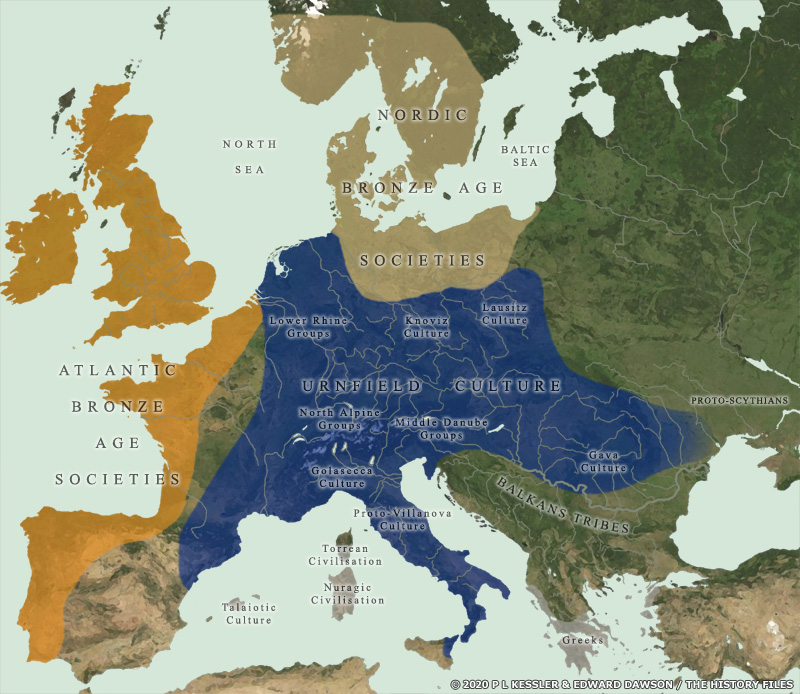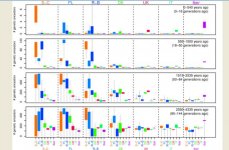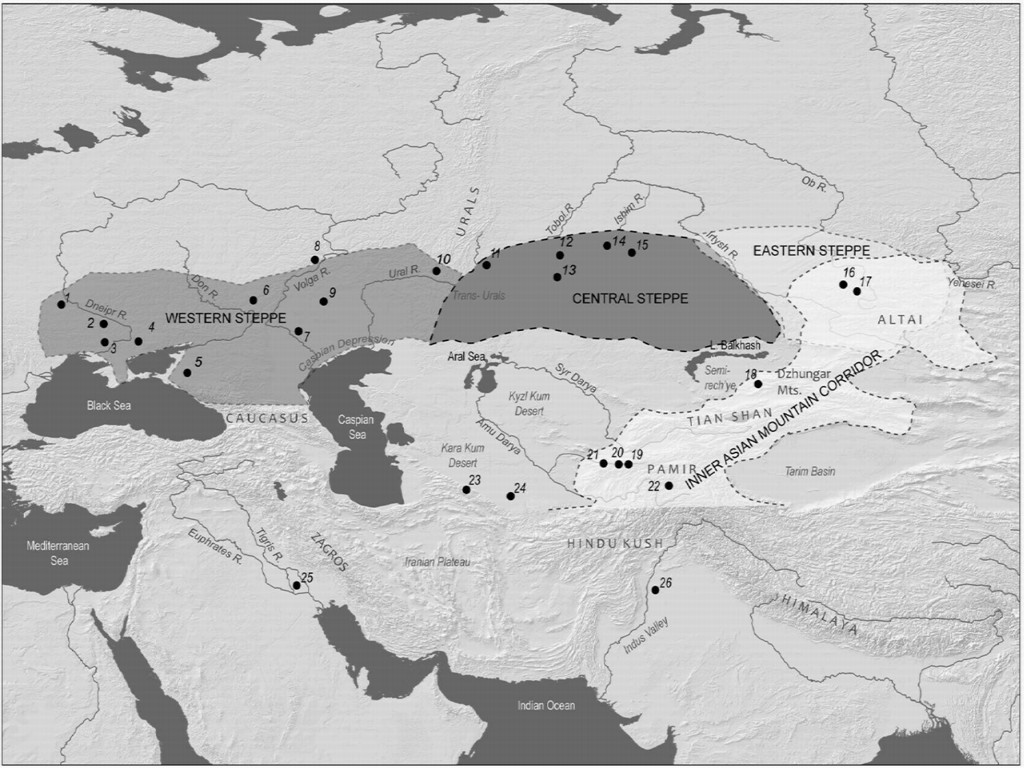Here are the K12b results for an LBK Early European farmer from 7500 years ago or
5500 BC. This is
not late Neolithic or
Middle Neolithic, it's
early Neolithic.
Kit F999916
Admix Results (sorted):
# Population Percent
1 Atlantic_Med 54.92
2 Caucasus 30.3
3 Southwest_Asian 10.78
4 Northwest_African 3.79
5 North_European 0.14
6 Southeast_Asian 0.06
Single Population Sharing:
# Population (source) Distance
1 Sardinian (HGDP) 17.48
2 TSI30 (Metspalu) 24.05
3 Tuscan (HGDP) 24.21
4 North_Italian (HGDP) 24.41
5 Andalucia (1000Genomes) 24.7
6 C_Italian (Dodecad) 24.93
7 Murcia (1000Genomes) 25.93
8 Sicilian (Dodecad) 26.56
9 Baleares (1000Genomes) 26.69
10 S_Italian_Sicilian (Dodecad) 26.83
That's quite a bit more SW Asian than exists today in parts of Italy (of which some percent would be Red Sea). So, there are two possibilities in terms of the Bronze Age Armenians versus modern Armenians. Either the Bronze Age Armenians were relative newcomers to the area and picked up additional elements as they admixed with the locals by the time of the modern era, or, as Alan says, the "SW Asian" component arrived later. There's no way to know for sure until you have a genome from the Armenian Neolithic/Copper Age. Maybe the Reich lab has one for their new paper, and I think there is supposed to be a paper coming out with more ancient Armenian genomes, yes?
If SW Asian wasn't present in the Armenian Neolithic, then there was some substructure in ancient Anatolia, which shouldn't be a surprise. For the EEF, we are talking about a group (if Paschou et al are correct) that followed the Levantine coast and then took off by sea. Even if some left directly from northwest Anatolia that's still quite a ways from the Armenian highlands all the way to the east, where the population might have been slightly different. After all, both Lazaridis et al and Haak et al pointed out that all the EEF are pretty homogenous in terms of autosomal composition.
See:
http://www.pnas.org/content/111/25/9211.abstract
Something else also occurs to me when thinking about when the various "Indo-European" peoples might have entered Italy. The latest Remedello sample is from around 1700 BC and is still I2a and EEF. If it turns out that the "Indo-Europeans" or at least the U-152 portion (which we now know was near the northeastern Alps in the Bronze Age thanks to Allentoft et al) of them didn't come down into the peninsula until quite a bit later, perhaps around 1300 BC with Urnfield related cultures, and reached more central areas even later, is it then such a stretch to imagine that the locals around the later "Etruria" in 1000-800 BC might still have been speaking a "farmer" language? Just a thought...I don't want to derail the thread.
See:
https://en.wikipedia.org/wiki/Urnfield_culture
Down stream U-152, (the L2) variety, might have come even later.
As for the L23 variety of R1b in Italy there are at least two possibilties: they might have entered from the south with Mycenean Greeks or with Cretans (?) or from the Balkans, forming the Apennine Culture, which was definitely "Indo-European" in nature .
https://en.wikipedia.org/wiki/Apennine_culture



